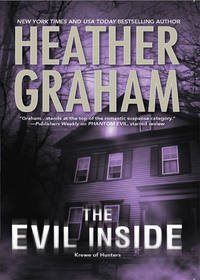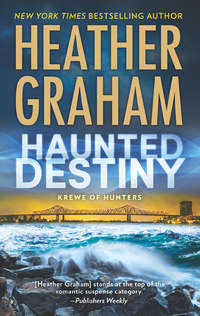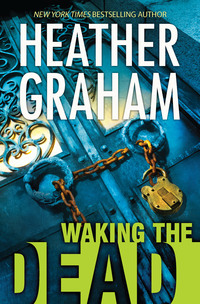
Полная версия
Waking the Dead
Larue got to his feet. “I can show you what we’ve got.”
* * *
Henry Sebastian Hubert.
The man had been getting attention recently, and he’d certainly received some during his lifetime, especially because of his connection with Byron, Shelley and their circle. But, alas, like so many writers and artists, he wouldn’t actually achieve fame until he died—in front of his last painting, considered his finest, most emotional, most intricate and most disturbing work of art. Ghosts in the Mind. Even so, his fame was erratic at best, and he’d never been more than a minor, if talented, painter. Danni sat at the desk in her studio, flipping through art books, Wolf curled at her feet.
When she’d gone through her books, she turned to her computer, keying in book sites to see if anyone had ever done a biography of the man. She found a few slim volumes, as well as several books that included a chapter on Hubert and his work, and ordered them for overnight delivery.
Frustrated, she scratched Wolf’s head. “Wolf, I have to leave without you, I’m afraid. I’m going to take a trip to the library. But you’ll be fine. Billie and Bo Ray are both here, working at the store.”
She stood and started out of her studio, then paused.
She didn’t want to look at the painting she’d done the night before. And yet she felt she needed to.
Walking over to her easel, she lifted the sheet from the canvas. The paint had been wet when Quinn covered it, but he’d been careful. There was a little smudging, but nothing that diminished the pure evil that seemed to exist in every stroke.
The faces showed humanity at its absolute worst. They bore hatred, bitterness, maliciousness, cruelty...evil. The darkest part of the human soul. These characters were ready to dole out agony without even blinking. This rendition had none of the subtlety or perspective of the Hubert painting, but at a distance, the colors blended together in a way that was striking. She imagined that if it hung in a gallery, people who saw it would be compelled to come closer....
And once they did, they’d be repelled. She studied each face. She’d have to see the Hubert again, but as she examined her own version of it, a sick feeling seemed to lodge in her stomach and stretch out to her limbs.
Had these characters been taken from life? Were they real people?
Wolf didn’t like the painting, either; he whined softly at her side.
She could no longer look at her own work and quickly recovered the canvas.
She turned and left the studio.
* * *
The evidence lockup was in a police station; someone should’ve seen something. There should have been at least one security camera that picked up what the others didn’t. But the fog was there. In every single image. The best techs on the force had searched through them all and found nothing but gray.
“It’s like trying to see through an extremely overcast day,” Larue commented. “Even where there was no fog, that’s what the security cameras recorded. Damnedest thing I’ve ever seen.”
“You got the packaging back on two of the deliveries—but not the objects?” Quinn demanded
“I can’t tell you how hard it would be to insist that people return priceless objects that belong to them,” Larue said.
“But we could ask.”
Larue scowled at him. “Okay, the charity auction—which supports housing in areas that still look like trash bins because of the storms—takes place this afternoon. The man with the jewelry isn’t about to let his diamonds and gold go again. And as far as that painting goes...well, Mrs. Lamont threatened to bring in the mayor, the governor and the president of the U.S.” He shook his head. “She wouldn’t even let us have the damn wrapping—said she didn’t have time to ‘properly devote’ to the painting, and until she did, she wasn’t unwrapping it.”
“I’ll go see her,” Quinn said.
“And do what?”
“I’ll talk to her. Meanwhile, you need to get some kind of court order to get that painting back.”
“A judge already slapped my wrist and explained civil rights and property law to me.”
“It’s evidence!”
“I’m doing everything in my power,” Larue insisted.
“Fine. Then I might as well give it a shot. Can’t hurt.”
Larue apparently agreed. “Hey, I have a suggestion,” he said.
“Yeah?”
“Take Danni. That way, maybe Mrs. Lamont will at least let you see the painting.”
Quinn nodded. It wasn’t a bad idea. Danni had a name as a local artist. Once upon a time—before her father’s death—art had been what she wanted in life. And she was good.
Notwithstanding her strange nocturnal frenzies at the canvas.
* * *
At the library, Danni leafed through book after book. She’d tried working online, but when it came to art, the best resources—in her opinion, anyway—could be found in a museum or at a library. Some books simply weren’t available online or for digital readers; this was especially true of expensive reference books that featured color reproductions.
Much of what she read she was already familiar with. Henry Sebastian Hubert had been born in 1790, making him twenty-six when he had rented a castle, the House of Guillaume, at Lake Geneva in the summer of 1816.
And he’d been twenty-six when he died. Like Shelley, he’d had a wife, a woman named Eloisa, who’d been left behind in England with their toddler son when Hubert had basically deserted her to spend his time on the shores of Lake Geneva. Maybe, had he lived, he would’ve gone back to her. But that was just Danni’s musing. She did love happy endings.
Hubert had not had a happy ending.
He’d created his first well-known work when he was in his late teens. It had been titled Graveyard at Night. It was a sad and oddly arresting piece, showing the facade of a medieval church surrounded by jagged, lichen-covered stones. His next work, more sophisticated, had been called Hanging Tree. There was no body hanging from the tree in the painting; the tree itself was the focus, skeletal and bony, seeming to move with the breeze, surrounded by shadow and ghostly images of those who’d met their deaths at the end of that one massive branch. In this painting, he’d begun his work with perspective. Of course, Danni was only looking at the reproductions in the book, but even then, she could see that, at first glance, there was nothing but the tree in the shadows and swirling dust. When she angled the page slightly, the shadows became ghosts.
Hubert had started young and by twenty-six he was well on his way. And then he’d painted Ghosts in the Mind.
When he was discovered dead, his wife had been informed, and the authorities had begun to prepare the body for transport to England.
Eloisa hadn’t wanted him back, so he’d been interred in the old crypt at the castle. His belongings were packed up and shipped back to her, and according to reputable sources, she hadn’t touched any of the paintings he’d done in Switzerland. Apparently, many people had tried to buy them from her—especially Ghosts in the Mind, since that painting had been done at the castle while Lord Byron, Shelley and Mary were an influence on his work. But she hadn’t unpacked a single crate.
At her death, her son had ordered that his father’s belongings be sold. That was in 1888. Henry Hubert’s widow had survived until the ripe old age of ninety-three, living happily off her inheritance and the proceeds from his previous artwork. She’d been quite the socialite.
The painting was purchased by a gallery in London. She’d promised the owner that, upon her death, he could buy the piece from her son.
Closing up one night, the owner was murdered. The gallery caught fire. Little attention was paid to the event, since it occurred on the same night as Jack the Ripper’s infamous murder of Mary Kelly in Whitechapel.
The painting was found in a thieves’ den where the thieves had fought over their ill-gotten gains and taken swords, pistols and knives to one another.
Danni sat back, catching her breath with a chilling sense of déjà vu.
Death followed the damned thing everywhere. Garcia’s house had been the scene of a massacre, too. She was more and more convinced that the painting had been in one of the courier packages waiting at his house. Nothing else made sense.
She looked up, gazing around the library. A woman was reading to a group of toddlers in the children’s section; a number of students were busy at computers. The library was sunny, bright, filled with activity. The world seemed good.
She looked back at the book, determined to pursue the course of the painting’s history.
It was locked away again as another twenty years went by, with police trying to sort through ownership. The gallery owner who’d been killed had died with neither wife nor child, so returning it properly became difficult.
Then, as she continued to study the painting’s provenance, she learned that an art historian, president of a small but prestigious museum in London, had acquired it at an art auction. Ghosts in the Mind was given a place of honor at his gallery in Surrey. There it was viewed by the public for several years, studied by art students. The place closed before dusk daily—and remained under guard. In January of 1915, the Germans attacked London with their first Zeppelin raids. Five people took shelter in the gallery that night.
Конец ознакомительного фрагмента.
Текст предоставлен ООО «ЛитРес».
Прочитайте эту книгу целиком, купив полную легальную версию на ЛитРес.
Безопасно оплатить книгу можно банковской картой Visa, MasterCard, Maestro, со счета мобильного телефона, с платежного терминала, в салоне МТС или Связной, через PayPal, WebMoney, Яндекс.Деньги, QIWI Кошелек, бонусными картами или другим удобным Вам способом.











